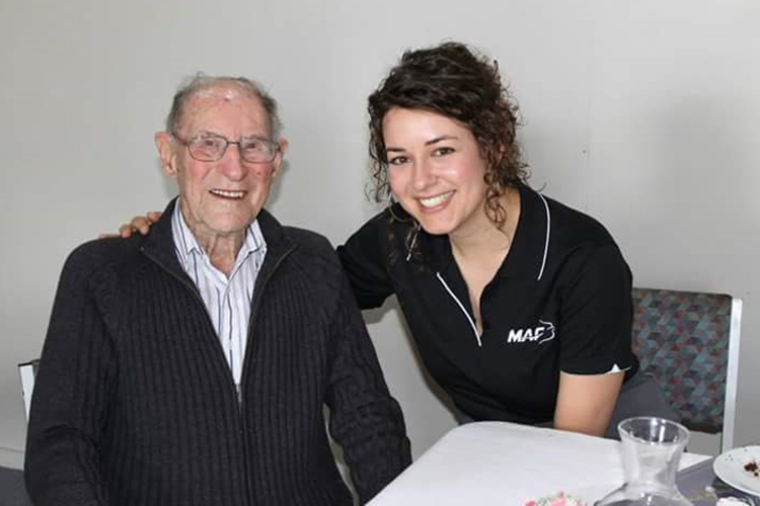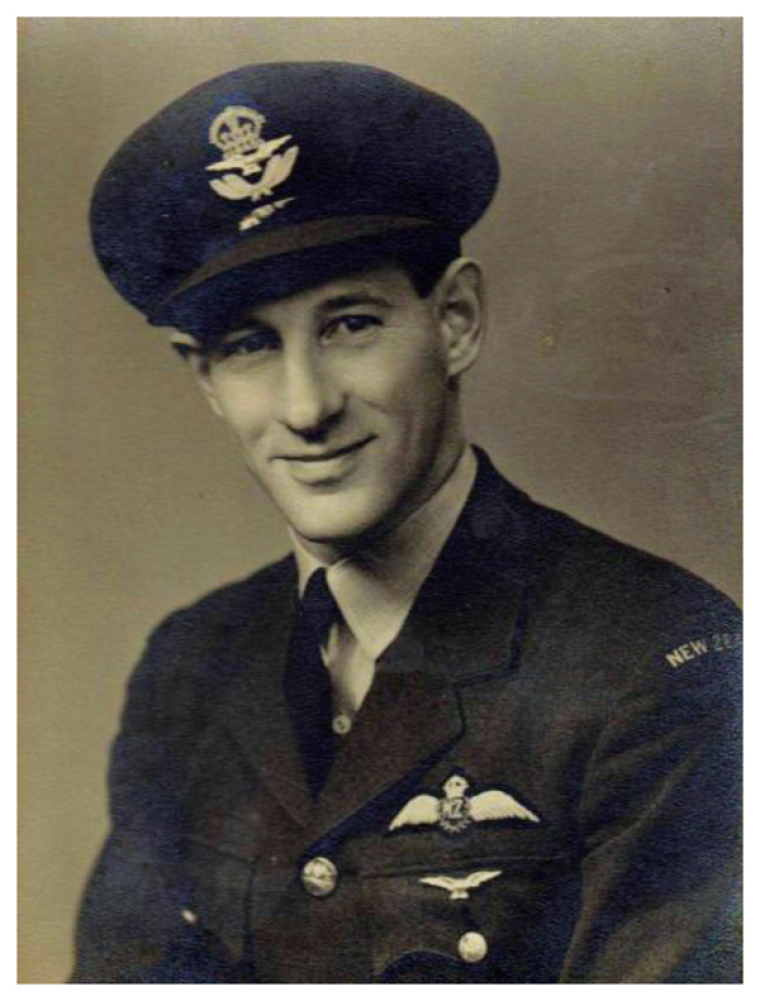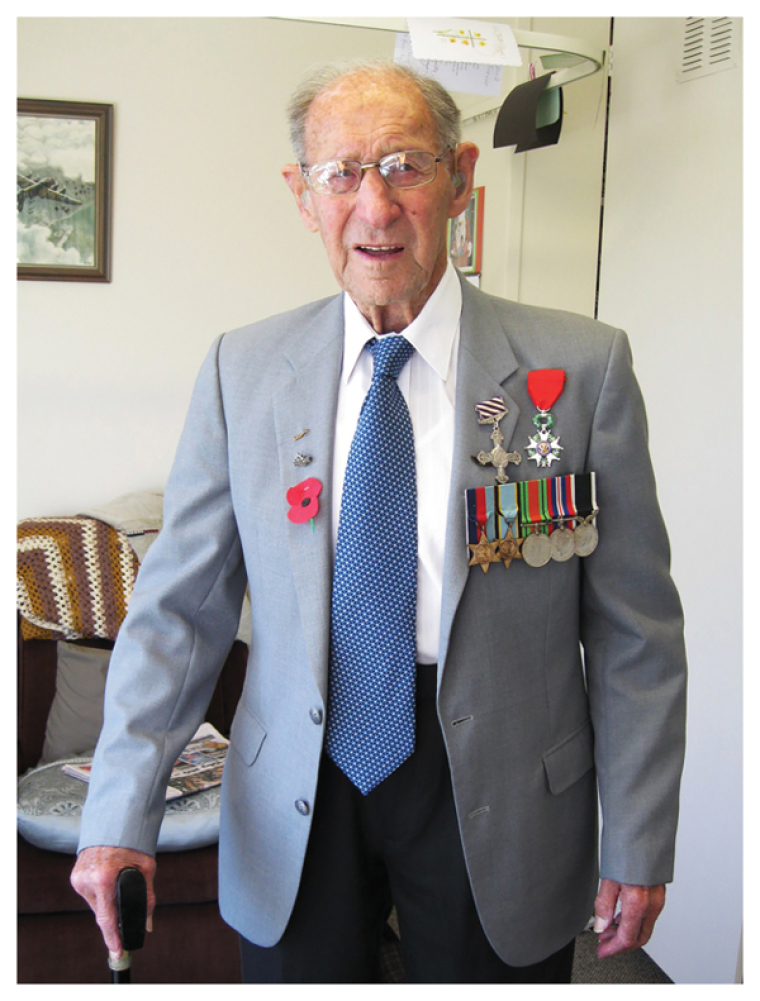
The humble hero: a WWII mission aviation legacy
The second of a two-part series on the founding history of Mission Aviation Fellowship – the largest mission aviation organization in the world.
(Part One: http://christiantoday.co.nz/news/the-pilots-dream-a-wwii-mission-aviation-legacy.html)
The story of Mission Aviation Fellowship (MAF) is fairly well known in mission circles. Birthed in the final throes of WWII, what started out with a few young Christian pilots has now become an international organisation of nearly 1,500 staff.
What's less well-known is the story of the pilots who turned a fledgling dream into a flying reality...

"I just thought it was a pretty good thing to do. To use planes for something good after using them for something so destructive."
—Flight Lieutenant Trevor Strong, 1946
The charming gentleman
Meeting Trevor Strong is like meeting a long lost friend. His warmth and graciousness are the first things I notice as I shake hands with one of the men who, in the midst of the horrors of WWII, dreamed that aircraft could be used for a better purpose.
Trevor is also a true gentleman and, when I arrive with my notebook in hand, the frail near-to-be-centennial’s first action is to offer me his chair. He asks me about myself, laughing easily as we exchange stories, with a ready smile and engaging humour.
Put quite simply, Trevor Strong is charming.
The faithful believer
He is also handsomely decorated* as a veteran WWII Pilot, but you would never hear this from Trevor. He is genuinely humble and not at all concerned with making his heroics known. It is the joy of his faith, strong yet gentle like the man himself, which glows in the retelling of his adventures.
In the 1930s, a 19-year-old Trevor attended a weeklong rally in his native New Zealand, finding his pardon and peace through Christ at the foot of the cross. This experience made a huge impact on him, and Trevor fondly recalls, “I found my joy in the service of the Lord Jesus Christ.”
Less than a decade after his conversion, a second World War exploded across the globe, and Trevor signed up for training in New Zealand to defend his country and his faith as a pilot. He continued his training in England, then began his tour of operations against the Nazi movement.
The skilled pilot
Flight Lieutenant Trevor Strong was a brilliant pilot—one of the best, in fact—and was soon assigned the high risk role of a pathfinder, flying over enemy territory to seek a clear path for the Allied forces.
On August 25, 1944, on his 45th and final pathfinding mission which would have earned his ticket home, Trevor’s plane was hit by Nazi guns over enemy lines. Trevor, a capable leader, successfully evacuated the entire crew of survivors before jumping from the doomed aircraft himself, crash landing in a cornfield.
Separated and alone, he evaded the enemy while making his way toward the Allied lines. It was a harrowing experience.
“I’ll never forget the sound of dogs, howling in the woods as they came after me…”
Two days later, Trevor was caught while searching for water. The Nazis interrogated him in solitary confinement, finally transferring him to a prison camp at Barth, near the Baltic Sea, where 9,000 Allied and British prisoners were held.
The courageous prisoner
Once again, Trevor’s faith held fast: “…the presence of the Lord was very real indeed.”
He found a number of other believers, sharing Bible studies, prayer and fellowship. But the men faced a grueling wait for the war to end. “As the war came to a close, things became very difficult,” Trevor recalled, “It was very cold and we were often hungry. It was a grim experience, but in all these things we were able to triumph in Christ.”
Eventually, Trevor’s POW camp was liberated by the Russians. With the traumas of war fresh in his mind and the grace of God strong in his heart, Trevor flew back to England, meeting up again with his friend and fellow Kiwi pilot, Murray Kendon. That same day, Trevor heard for the first time of his friend’s unique vision: using aircraft as a tool of the Gospel.
The mission co-founder
Trevor immediately knew that this was God in action. His mind raced back to the night he had flown through flashing tracers in a battlefield in the sky; he had quietly promised God that, if he came out of this war alive, he would use his influence in Christian mission work.
Now as peace began, Murray was proposing a new kind of mission organization: one that would use aircraft for help and hope, rather than for war. Trevor joyfully resonated with this.
“I felt that this was what the Lord had called me to do.”
Trevor threw himself into working with Murray, and the two Kiwis had soon set up a small headquarters in London. They spent the year travelling around the UK gathering support and sharing the dream, and watching in awe as God breathed blessing into the radically new goals of two former fighter pilots.
The centennial catalyst
In 1946, Trevor Strong, war-hero-turned-mission-founder, returned to New Zealand to finally marry his sweetheart, Joan Flemming. But his mission drive did not end with his departure from England, and he established the MAF NZ Committee in 1947, later becoming the first chairman of the MAF NZ Board. In 1959, MAF New Zealand was officially incorporated as a Society and, although Trevor was not able to continue flying due to hearing damage sustained from the war, he served on the MAF NZ Board and continued to play a key part in MAF in New Zealand for many years. He and Murray remained good friends.

On November 29, 2014, Trevor Strong celebrated his 100th birthday. Older, wiser, yet still sporting that indomitable grin, he greeted his centennial year with the same unruffled faith that had carried him through a violent war, a ground-breaking new mission organisation and a joyful life lived to the full.
The humble hero
A few weeks before his 100th birthday, I asked Trevor if he knew the statistics of MAF today: that the pioneer aircraft he and Murray had first purchased was now a global fleet of 140 planes, that the one country in which they had begun using planes for mission had expanded to include 32 countries with 3000 airstrips between them.
There was a pause. Trevor gazed thoughtfully into the distance.
“Well,” he said, then flashed his signature grin. “Fancy that.”
Author’s Note: I would like to thank Trevor Strong and his daughter Beverley van Vugt, who graciously met with me on a number of occasions in 2014, sharing old photographs, newspaper clippings and diary extracts, and helping me to piece together Trevor’s story. All photos courtesy of Beverley van Vugt.
Credit also to the New Zealand Challenge newspaper’s article on Trevor: Edition 29, August 1946.
On February 8, 2016, Trevor Strong took his final rest and was promoted to his greatest honor yet: meeting His Saviour and Lord face to face.
*Trevor Strong’s medals included the Distinguished Flying Cross for Valour (presented at Buckingham Palace), and the Legion of Honour (France's highest military honour) for the courage and sacrifice shown in his role in the D-Day landings.

Emma is an Italian-South African with a New Zealand passport and an international heart. She spent years training student choirs and co-running a puppeteering business, before working for a humanitarian organisation in New Zealand (7 years) and Papua New Guinea (3 years). Currently a nomad living between various countries and towns, Emma's deep joy is in writing, music, cooking up an Italian storm, and taking time to listen to people’s stories.
Read Emma's creative expressions at http://www.girlkaleidoscope.wordpress.com or https://pngponderings.wordpress.com/2016/09/02/finding-the-beauty/
Emma’s previous articles may be viewed at www.pressserviceinternational.org/emma-mcgeorge.html